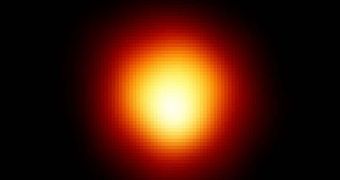While astronomers have a fairly decent understanding of how stars pop into existence, the underlying processes that trigger their formation in the first place are still clouded in mystery. Actually, they are clouded in cosmic dust and gases, which are also the basis for the new stars. Devising a way of penetrating those layers has finally offered scientists the possibility to observe the forming process directly and to elaborate new theories as to how massive celestial bodies are formed.
One of the new groundbreaking theories is that stars several times larger than our Sun form from many smaller protostars, which collide inside the gas cloud, “sticking” together and shaping the future giant. The reason for this fragmentation is the huge gravity force that acts on the clouds of gas and dust.
The process can be likened to that which takes place inside stellar nurseries, where thousands of new blue celestial bodies are formed at the same time. The theory goes that the same holds true when massive ones are also born, only on a smaller scale, which prevents two new bodies from taking shape, but creates a larger one.
Thanks to a joint project made possible by the Smithsonian Astrophysical Observatory and the Academia Sinica Institute of Astronomy and Astrophysics, a new tool, the Submillimeter Array (SMA), is now capable of penetrating the clouds surrounding raising stars and giving experts insight into what goes on inside. “The SMA enables us to see the dust and gas in the cocoon with amazing details, and to probe the initial stages of massive star formation,” Smithsonian astronomer Qizhou Zhang, the lead author of the new report accepted for publication in an upcoming issue of The Astrophysical Journal, explains.
Perhaps the most important thing determined by the latest observations is the fact that thermal pressure has been proven not to be the determining influence in the formation of new massive stars. Instead, turbulences in the gases and the dust have been found to assist the forming process directly, allowing a protostar to be born from accretion.
“What's unique about these SMA observations is that we can check some of the hypotheses for massive star formation against the observations for the first time. Unlike what has been assumed in theoretical models, we found that fragmentation is suppressed in these clouds, not by stellar heating but rather by turbulence,” Zhang adds.
“We have just started to understand the initial conditions in distant, massive star-forming regions. A large survey that we have launched with the SMA will, in the near future, reveal the nature of more of such objects,” Harvard-Smithsonian Center for Astrophysics researcher Thushara Pillai, who is also the co-author of the new report, concludes.

 14 DAY TRIAL //
14 DAY TRIAL //